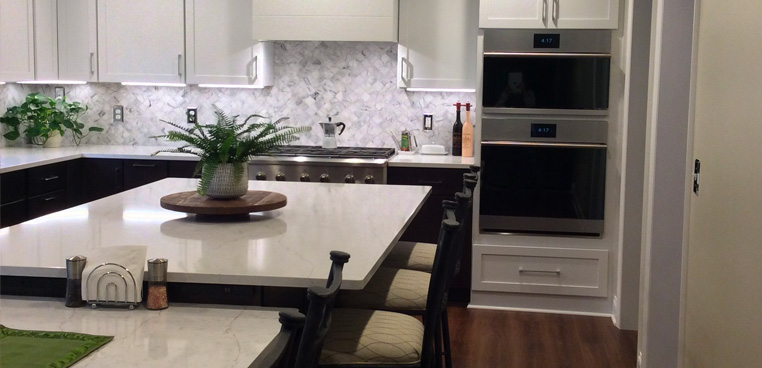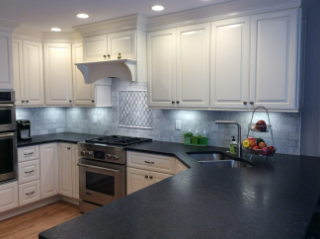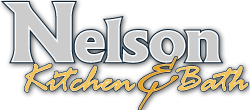
How a Kitchen Remodel Adds House Value
When it comes to home improvements that pack the biggest punch for your property value, kitchen remodels consistently rank at the top of the list. It’s not hard to understand why, the kitchen has evolved from a purely functional space to become the heart of the modern home, where families gather, entertain, and create memories together. A well-executed kitchen renovation can not only transform your daily living experience but also provide one of the highest returns on investment among home improvement projects.
The Numbers Don’t Lie: Kitchen Remodeling ROI
 Let’s talk dollars and cents for a moment. According to recent real estate market analysis, homeowners can expect to recoup anywhere from 60% to 80% of their kitchen remodel costs in increased home value. This means if you spend $40,000 on your kitchen renovation, you could potentially add $24,000 to $32,000 to your home’s resale value. Of course, these numbers can vary significantly based on your local market, the scope of your renovation, and the choices you make along the way.
Let’s talk dollars and cents for a moment. According to recent real estate market analysis, homeowners can expect to recoup anywhere from 60% to 80% of their kitchen remodel costs in increased home value. This means if you spend $40,000 on your kitchen renovation, you could potentially add $24,000 to $32,000 to your home’s resale value. Of course, these numbers can vary significantly based on your local market, the scope of your renovation, and the choices you make along the way.
What’s particularly interesting is that you don’t always have to go all-out with a luxury renovation to see substantial returns. Sometimes, strategic updates and moderate improvements can yield the best bang for your buck. The key lies in understanding what buyers in your market value most and targeting your improvements accordingly.
Understanding Value-Adding Kitchen Features
The kitchen features that add the most value to your home often align with current lifestyle trends and practical considerations.
Let’s explore some of the most impactful elements:
Countertops: The Visual Anchor
Countertops are often the first thing people notice in a kitchen, and they can make or break the overall impression. Natural stone surfaces like granite and quartz continue to reign supreme in terms of both durability and buyer appeal. While granite was once the undisputed king of kitchen counters, engineered quartz has gained significant ground due to its non-porous nature and lower maintenance requirements.
What makes these materials such good investments? They offer an perfect blend of functionality and aesthetic appeal. They’re heat-resistant, difficult to scratch, and when properly maintained, can last for decades. While the initial investment might be higher than laminate or tile options, the long-term value proposition is compelling. A quality stone countertop installation typically costs between $3,000 and $7,000 but can add significant perceived value to your kitchen.
Cabinetry: The Foundation of Function
Cabinet quality and design can make up about 30% of your kitchen remodel budget, and for good reason. Well-designed, high-quality cabinets not only provide essential storage but also set the tone for your entire kitchen’s style. Modern buyers particularly value features like soft-close drawers, pull-out organizers, and specialized storage solutions.
When it comes to cabinet choices, you have several value-adding options. A full cabinet replacement with custom units will provide the highest potential return, but it’s also the most expensive route. Cabinet refacing – where you keep the existing cabinet boxes but replace the doors and hardware – can be a cost-effective alternative that still provides significant value. Even a fresh coat of paint on existing cabinets, when done professionally, can give your kitchen an updated look that appeals to buyers.
Appliances: The Workhorses of the Kitchen
Energy-efficient, modern appliances are no longer just a luxury – they’re an expectation among today’s homebuyers. Stainless steel remains the finish of choice, though new variations like black stainless and slate have gained popularity. Smart appliances that can be controlled via smartphone apps or voice commands are increasingly desirable, particularly among younger buyers.
When selecting appliances, focus on reliable brands with good energy ratings. A matching suite of appliances creates a cohesive look that buyers appreciate. While professional-grade appliances can be impressive, they’re not always necessary for maximizing return on investment. Mid-range, energy-efficient appliances from reputable manufacturers often provide the best value proposition.
Lighting: Setting the Mood and Functionality
Good lighting is crucial in a kitchen, and a well-planned lighting scheme typically includes three types: ambient, task, and accent lighting. Modern LED fixtures are energy-efficient and can significantly brighten up a space. Under-cabinet lighting has become particularly popular, as it provides both practical task lighting and attractive ambiance.
The strategic placement of lighting can make your kitchen appear larger and more welcoming. Pendant lights over an island or eating area add style and focused illumination, while recessed lighting provides even, overall brightness. These improvements are relatively inexpensive compared to other kitchen updates but can significantly impact the overall appeal of the space.
The Impact of Layout Changes
One of the most significant ways a kitchen remodel can add value is through improved functionality and flow. The modern preference for open-concept living has made removing walls between kitchens and living areas a popular choice. While this type of structural change requires a bigger investment, it can dramatically increase your home’s value by creating the spacious, social environment that today’s buyers seek.
When considering layout changes, focus on these key principles:
- The work triangle (the path between the sink, stove, and refrigerator) should be efficient and unobstructed. Ideally, each leg of the triangle should be between 4 and 9 feet, with the total perimeter between 13 and 26 feet. This ensures comfortable movement while cooking and preparing food.
- Island additions can provide extra counter space, storage, and casual seating. In larger kitchens, islands have become almost mandatory features that buyers expect to see. They serve as natural gathering spots and can house additional features like prep sinks or wine refrigerators.
- Traffic flow is crucial – there should be at least 36 inches of walking space between countertops and islands, and even more in cooking areas. Good flow makes the kitchen more pleasant to use and can make the space feel larger.
The Role of Materials and Finishes
The materials and finishes you choose can significantly impact both the immediate appeal and long-term value of your kitchen remodel.
Here’s where attention to detail really matters:
Flooring Choices
Flooring needs to be both beautiful and practical in a kitchen setting. Hardwood continues to be popular, but luxury vinyl plank (LVP) flooring has gained significant market share due to its durability, water resistance, and authentic wood-like appearance. Porcelain tile remains a classic choice, especially in warmer climates, offering excellent durability and endless design options.
Backsplash Considerations
While subway tile remains a classic choice, larger format tiles and unique materials like glass or natural stone can create striking focal points. The backsplash is an opportunity to add personality to the kitchen while providing practical wall protection. Since it’s typically a smaller area, you can often afford to spend a bit more per square foot on high-end materials without breaking the budget.
Hardware and Fixtures
Never underestimate the impact of quality hardware and fixtures. These relatively small items can add significant polish to your kitchen’s overall appearance. Soft-close hinges, full-extension drawers, and professional-grade faucets are details that buyers notice and appreciate. These elements should be both functional and aesthetically pleasing, complementing your overall design scheme.
Timing Your Kitchen Remodel for Maximum Value
The timing of your kitchen remodel can affect its impact on your home’s value. If you’re planning to sell soon, focus on updates that have broad appeal and avoid highly personalized choices.
If you’re remodeling for your own enjoyment but want to maintain good resale value, consider these factors:
Market Trends
Stay aware of what’s popular in your local market, but avoid extremely trendy choices that might look dated quickly. Classic designs with modern touches often provide the best long-term value. Work with local real estate agents or designers to understand what features buyers in your area prioritize.
Neighborhood Considerations
Your kitchen should be appropriate for your home’s price point and neighborhood. Over-improving for your area can make it difficult to recoup your investment, while under-improving might make your home less competitive when it’s time to sell.
Seasonal Timing
If possible, plan your remodel during the off-season when contractors might offer better rates and have more availability. This typically means avoiding the summer months when home improvement projects are at their peak.
Budget Considerations and Value Engineering
A successful kitchen remodel that adds real value requires careful budget planning and smart choices about where to spend and where to save:
High-Impact Areas
Spend more on elements that get the most use and visibility:
- Quality cabinetry and hardware
- Durable countertops
- Energy-efficient appliances
- Professional-grade faucets and sinks
Areas to Save
Find creative ways to save on less crucial elements:
- Consider luxury vinyl instead of hardwood flooring
- Use porcelain tile that mimics natural stone
- Choose stock cabinets with custom details
- Opt for middle-tier appliances from reputable brands
Hidden Value Additions
Don’t forget about behind-the-scenes improvements that add real value:
- Updated electrical systems
- Modern plumbing
- Improved ventilation
- Added insulation
- Water-efficient fixtures
Green Features and Energy Efficiency
Increasingly, buyers are looking for kitchens that are not only beautiful but also environmentally conscious and energy-efficient.
These features can add significant value:
Energy-Efficient Appliances
ENERGY STAR certified appliances can reduce energy usage by 10-50% compared to standard models. While they might cost more upfront, they save money over time and are attractive to energy-conscious buyers.
Water Conservation
Low-flow faucets and water-efficient dishwashers can reduce water consumption significantly. These features are particularly valuable in areas where water conservation is a priority.
Sustainable Materials
Consider using sustainable materials like bamboo flooring, recycled glass countertops, or cabinets made from sustainably harvested wood. These choices appeal to environmentally conscious buyers and can set your kitchen apart.
Future-Proofing Your Kitchen
To ensure your kitchen remodel maintains its value over time, consider incorporating features that will remain useful and attractive for years to come:
Universal Design Elements
Include features that make the kitchen accessible and comfortable for people of all ages and abilities:
- Pull-out shelves and drawers
- Easy-grip handles
- Variable height countertops
- Good task lighting
- Wide pathways
Smart Technology Integration
While you don’t need to go overboard with technology, including some smart features can add value:
- Smart appliances that can be controlled remotely
- USB charging stations
- Motion-sensor faucets
- Programmable lighting systems
The Importance of Professional Help
While DIY projects can save money, a kitchen remodel that truly adds value typically requires professional expertise.
Here’s why:
Design Professionals
A kitchen designer or architect can help you:
- Maximize space efficiency
- Ensure proper workflow
- Select complementary materials and finishes
- Avoid costly mistakes
- Create detailed plans for contractors
Quality Contractors
Experienced contractors bring:
- Technical expertise
- Code compliance knowledge
- Quality craftsmanship
- Proper licensing and insurance
- Warranty protection
Common Mistakes to Avoid
To ensure your kitchen remodel adds maximum value, avoid these common pitfalls:
Poor Planning
Don’t rush into a remodel without a detailed plan.
Take time to:
- Research materials and costs
- Get multiple bids
- Create a realistic timeline
- Plan for contingencies
- Secure necessary permits
Ignoring Storage
Storage is crucial in kitchens. Don’t sacrifice storage space for aesthetic features. Instead, look for creative ways to maximize storage while maintaining style.
Choosing Form Over Function
While aesthetics are important, functionality should drive most decisions. A beautiful kitchen that’s awkward to use won’t add as much value as one that works well and looks good.
Summary: Adding Additional Value to Your House through a Kitchen Remodel
A kitchen remodel remains one of the most reliable ways to add value to your home, but success lies in the details. Focus on quality materials, smart design choices, and professional execution. You can create a kitchen that not only enhances your daily life but also provides a solid return on investment when it’s time to sell.
The best kitchen remodels balance current trends with timeless design elements, prioritize functionality while maintaining style, and consider both immediate enjoyment and future home resale value. Whether you’re planning a complete renovation or strategic updates, focusing on these principles will help ensure your kitchen remodel adds meaningful value to your home.
The key is to create a space that works well for daily life while appealing to potential future buyers. With careful planning, attention to detail, and smart choices about where to invest your budget, a kitchen remodel can significantly increase your home’s value while providing years of enjoyment for your family.
